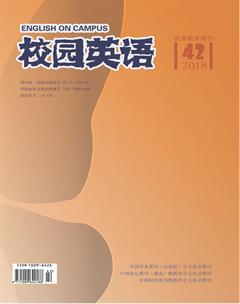The Status of Dharmacharya Fazun in the History of Translation
【Abstract】This article is based on documentary method and studied many translations of Dharmacharya Fazun. All of the study came to four conclusions: (1)Dharmacharya Fazun has made a big contribution to the translation of Buddhist Texts, thus built a milestone in the history of Buddhist translation. (2)The translation thought of Dharmacharya Fazun has a large impact on the later generations. (3)The translation of him has a positive influence on the communication of culture between Hannese and Tibetan. (4)Dharmacharya Fazun held an important position in the history of translation.
【Key words】Dharmacharya Fazun; cultural communication; translation
【作者簡介】刘丽婷,陕西服装工程学院。
1. The translation career of Dharmacharya Fazun
Fazun, (1902-1980), whose original name was Wen Genggong, was born in Hebei province.
1.1. Main translations of Dharmacharya Fazun
Fazuns translation contain a broad category, including Mediation on The Mean, Mind Only, The Exoteric Teaching of Buddhism, Tantra, Hetuvidya, Anecdotes, Dictionaries and so on.
Fazun is good at both Tibetan and Chinese, due to this, Fazun also called “Xuanzang in Contemporary Time”. His representative works contain The Great Exposition of the Stages of the Path to Enlightenment, The Great Exposition of Tantra, the Biography of Tsongkhapa and the Biography of Atisha. The translation of the Biography of Tsongkhapa and the Biography of Atisha made the exoteric and Tantra Buddhism spread in to Chinese main land at the first time.
Apart from Tibetan to Chinese translations, Fazun also did a lot Chinese to Tibetan translations. This is obvious especially after the establishment of Peoples Republic of China. As a member of Beijing translational union of Bodhi Society, from 1950 to 1954, he had translated On the Peoples Democratic dictatorship, and On New Democracy and Social History of Development and so on. All of these translations built a bridge for cultural communication between Hannese and Tibetan; whats more, these also become the thought basis of the unity and bloom of our country.
1.2 Dharmacharya Fazuns translation thoughts
His thoughts of translation could reduce to three aspects.
(1)Quote others translations and make sure their accuracy.
This principle went through all the process of his translations, he always adopt the advantages of different speech with his own unique opinion and thought. For example, when he was translating the original work of the Exposition of The Stages of the Path Enlightenment,Fazun referred to two different versions in Lhasa city, which made his translation accurate and liable.
(2)Respect the tradition of Buddhism and keep the original feature.
Fazuns translation paid much attention to the tradition of Buddhism and the speech of the honorable teacher. Under this principle, the proper noun of Buddhism were all according to the old examples, and if there was no examples, he would follow the original Tibetan or just adopt the advises of his teachers. As for those name of places and people, he would transliterated them or made note.
(3)Use literal translation as main method with free translation as supplementary.
The broadness of his reading eyesight and the reservation of the true meaning had opened up a new road of keeping characteristics of the central plains to the translators then.
2. Conclusion: summarization of Dharmacharya Fazuns status in the translation history
Firstly, the amount of his translation, the sum of translation is 75 volumes, totally 1335 pieces. The large amount of his translation not only got the praise of the later generation, but also commended by learners from overseas.
Secondly, his translation include both Hannese and Tibetan as well as the exoteric and Tantra Buddhism. His translations are a bridge which linked the cultural communication between Han and Tibetan.
Lastly, the thoughts and theories embodied in his translations not only showed his faith, expressiveness and elegency in his works but also an important reference for the later learners who want to be successful in the translation.
In a word, it is worthy for us to study and record Fazun due to his great contribution to the translation.
References:
[1]周祝英.現代五台山著名高僧法尊法师[J].五台山研究,2005,2.
[2]李尚全.法尊法师在现代中国佛教史上的地位[J].南京晓庄学院学报,2010,1.
[3]罗桑嘉措.谈藏传佛教典籍在翻译方面的若干问题[J].法音,1994,6.
[4]温金玉.法尊法师与普化寺[J].五台山研究,1995,2.

